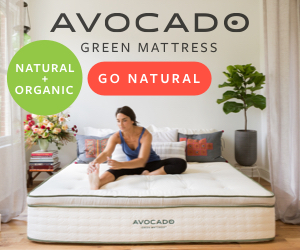Bees, the honeybee to be exact, play a huge role in our growing and planting process here on planet Earth. With the honeybees ability to collect pollen, he is then able to carry it from plant to plant, pollinating each one in the process. The collection process of pollen is preformed by the pollen grains from the flowers he lands on and is the adhered to the little bees hairs. The honeybee then uses the stiff hairs on its legs to ball the pollen up into pellets for easy carry to the hive.
.JPG) |
| Honeybees collecting nectar and pollen off of Dandelions.
|
Pollen is about 7.5 to 35 percent protein and is easily absorbed by the body of humans and can boost the immune system in the process. (Children under the age of 1 should never be given honey because of the bacteria spores within the honey that it "may" contain.)
Bees have this unspoken communication too. The scout bees find the nectar of pretty flowers and preform a figure 8 when the flowers are far and a circle with the flowers are close to the rest of the hive when they return. The nectar is then collected and returned to the hive to fill the honey sacs by the worker bees. The worker bees then deposit it into the honeycomb.
The honeycomb is made by bees from the glands on the bee's stomachs and then shaped by the workers into the hexagon shapes we are all familiar with. Once the nectar is placed into the honeycomb it is then topped with a wax top and sealed to protect it. As you can see, the worker bee plays a very important role here in the making of the honey.
Worker bees also use their wings inside the hive to fan the honeycomb in order to evaporate the water content from the honey and raise the sugar content. This process that bees do actually keeps honey from never spoiling, so honey keeps a very, very long time once it's jarred or bottled.
 |
| Honeybees collecting nectar and pollen off of Dandelions. |
Honey is super delicious and very sweet. And did you know that it's the only food made by an insect that we all eat?
Almost everything we eat, that's grown, is thanks to the bee, especially the honeybee! Their pollination techniques are valuable to our survival. Honeybees aren't the only
pollinators though, we owe pollination to honeybees, bumblebees, hummingbirds, bats, moths and butterflies, mason bees, and even grasshoppers, and ants.
The USDA has estimated that 80 percent of insect pollination is accomplished by the honeybee alone. Farmers from state to state rent out their beekeeping services of bee enthusiast to help pollinate their crops, especially fruit and nut crops. So, without the honeybee we would be in a big jam.
Honey throughout history has shown that not only is it enjoyed in today's culture, it was enjoyed many centuries ago as well.
• Greek philosopher Plato (347 B.C.) was said to have a swarm land on his tongue as a child and therefore his words flowed like the sweetness of honey as an adult.
• St. Ambrose (A.D. 397) was often referred to as "honey tongue" as a doctor because he was said to have and experience with bees and his emblem was the hive for his practice. His feast day is December 7th.
• Albert Einstein (1955) was once quoted as saying, "If the bee disappears from the surface of the earth, man would have no more than four years to live." Although the statement holds true, no actual proof was ever linked to Einstein as saying such a fact, but for my opinion, I believe he did. :)
• Aristole ( 322 B.C) was quoted as saying that honey was the nectar of gods.
With the recent indications of
Colony Collapse Disorder (CCD), in which the worker bees suddenly disappear from the hive, therefore making production of honey and pollination come to a standstill within that particular hive. Solutions have been made since the first discovery in 2006, but CCD is still seen in and among most hives still today. A large part of the CCD issue has been pointed toward issues like insect disease, crop and pest dusting, or even climate and environment changes. It has also been linked to some forms of radiation, but no clear answer is still given as to why.
Although pesticides have been linked to the
CCD collapse, you can do your part by using environmentally-friendly pesticides such as soap and vinegar for your plant leaves. Small changes throughout your gardening practice can help the honeybee greatly.
Ways you can also help:
• Support an organic, local farmer
• Plant seeds and grow your own garden veggies
• Use better pesticides and cut out chemicals

























.JPG)
.jpg)











.JPG)

























